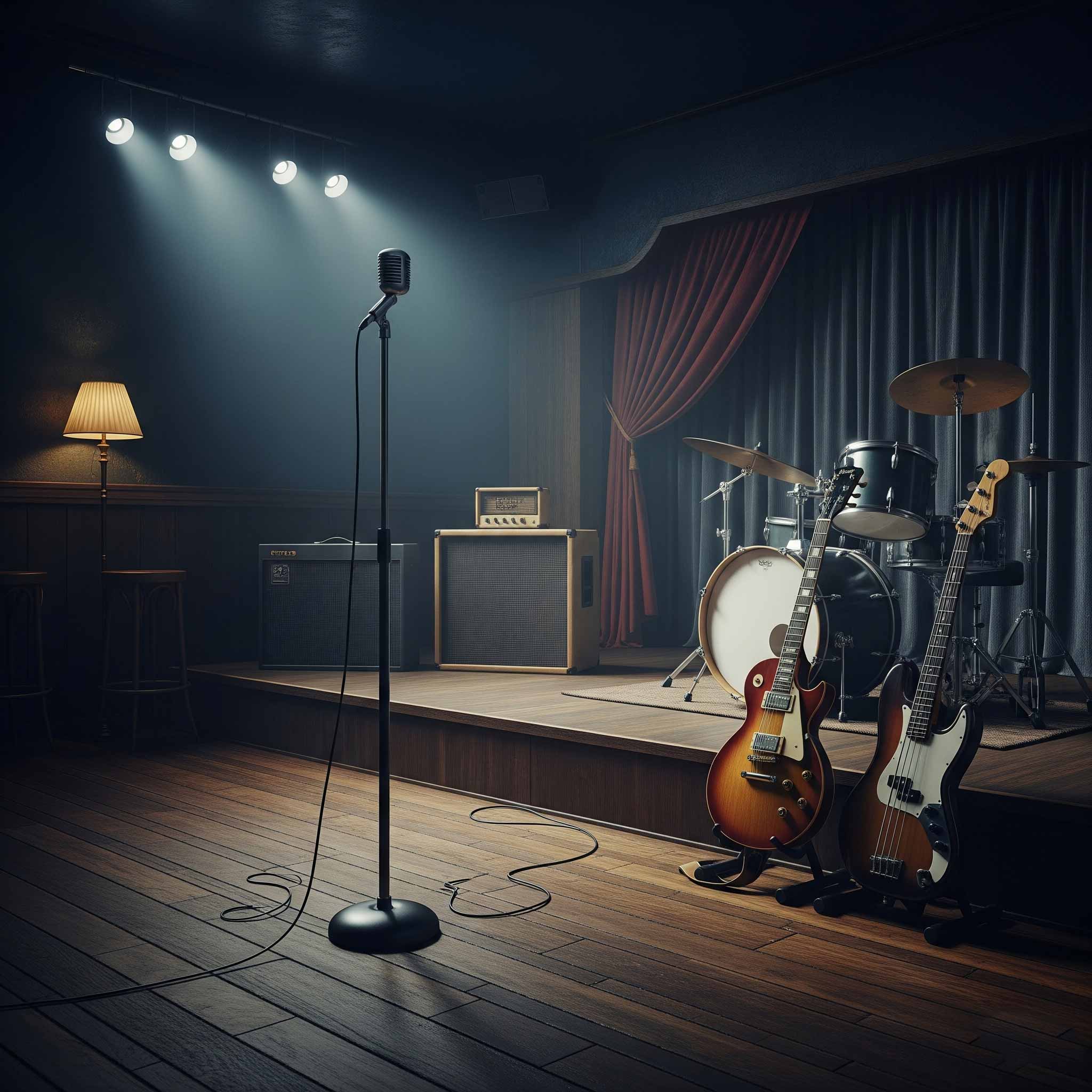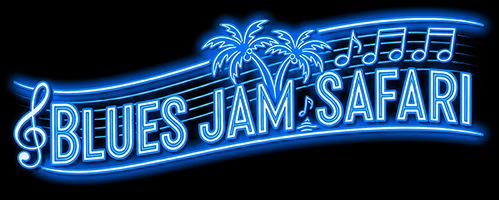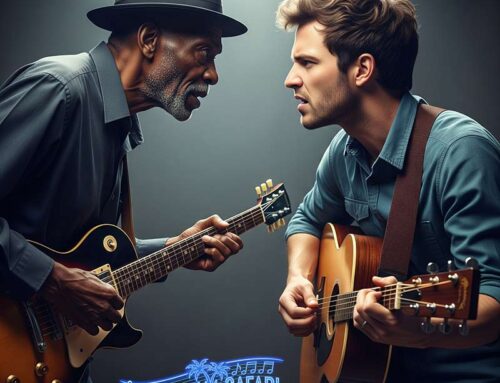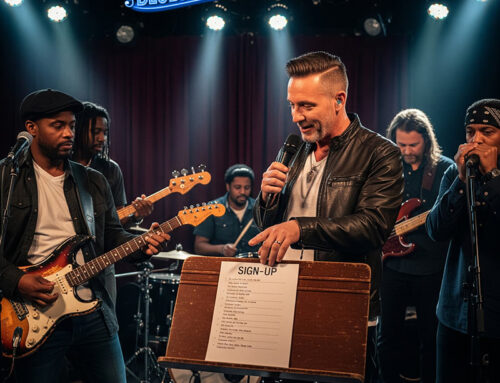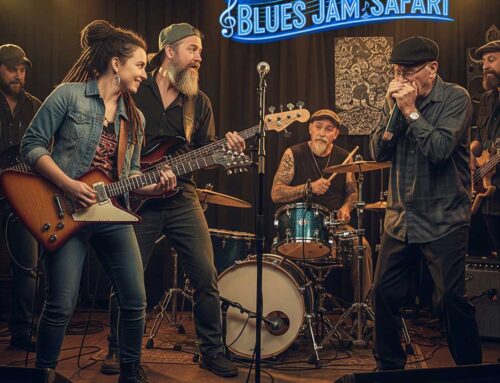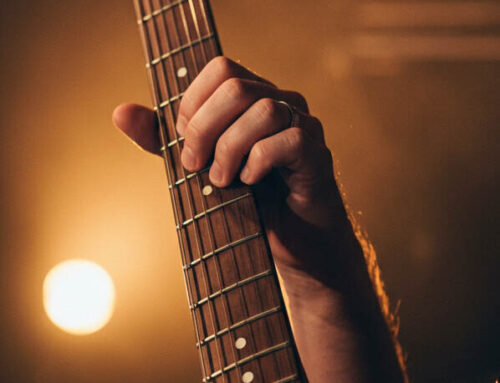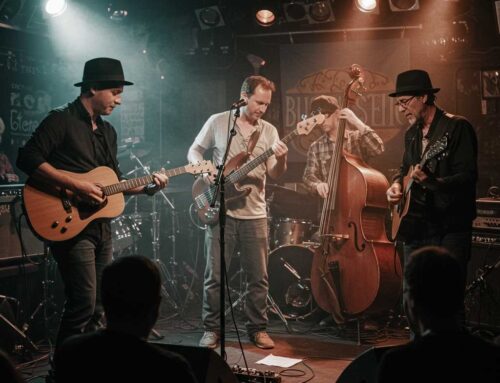Legendary Guitarists Who Forged Their Sound in the Blues Jam
By: Richard Harvey
There’s a special kind of magic that electrifies the air when musicians gather, plug in, and let raw instinct guide their fingers. It’s the blues jam – an unscripted, often smoky crucible where riffs are exchanged like currency, solos are born in the heat of the moment, and musical reputations are forged in real-time. For countless aspiring guitarists, these informal gatherings have been the ultimate proving ground, a dynamic classroom without walls or rigid curricula, where the raw energy of improvisation teaches lessons no textbook, video tutorial, or online course ever could. Indeed, some of the most iconic guitar heroes in history sharpened their teeth, found their singular voices, and cemented their legendary status not in pristine recording studios, but in the spontaneous, electrifying environment of the blues jam.
What exactly is a blues jam? It’s typically an open-mic night or an informal gathering where musicians, often strangers or loose acquaintances, take turns playing blues standards. A key is called out, a basic structure (like a 12-bar progression) is established, and then the magic begins. The beauty lies in the collective improvisation: a rhythm section locks into a hypnotic groove, and guitarists (along with harmonica players, vocalists, and other instrumentalists) step forward to improvise solos, reacting to the rhythm section, responding to previous soloists, pushing harmonic boundaries, and listening intently. This is where musical ideas spark, techniques are tested under pressure, and individual styles blossom in a vibrant, communal dialogue. It’s a high-wire act with a net woven of shared musical understanding.
Let’s delve deeper into the stories of some giants who rose from these vibrant, unscripted stages:
1. B.B. King: The “King of the Blues” Forged on the Road, Night After Night
While not strictly starting at a dedicated “jam night” as we might define it today, B.B. King’s entire foundational career was a perpetual, immersive blues jam. From his earliest days as a sharecropper in the Delta to hitchhiking his way to Memphis, playing on street corners, in dimly lit juke joints, and over the airwaves of powerful radio stations like WDIA, his signature style was forged in the relentless heat of live, spontaneous performance.
His Connection to the Jam: B.B.’s development wasn’t from meticulous practice to a click track; it was from constant interaction with audiences and fellow musicians. His legendary “one-note” soloing style – characterized by its precise, vocal-like bends, shimmering vibrato, and impeccable phrasing – wasn’t learned from a method book. It was honed over thousands of nights, responding to the nuances of a blues progression, learning exactly how to make every single note sing and sting. He learned the art of musical space, how to let “Lucille” (his guitar) respond to his vocal calls, creating a dialogue that was as much conversation as it was melody. Every single live performance was, for B.B., a new jam, pushing him to refine his unique, instantly recognizable voice and emotional depth that transcended mere technique. His mastery of dynamics – from a whisper to a roar – was a direct product of constantly adapting to the mood of the room, learned only through endless live play.
2. Jimi Hendrix: The Psychedelic Spark Ignited in the R&B Grind
Before he was setting guitars on fire at Monterey or dazzling at Woodstock, Jimi Hendrix was a journeyman R&B guitarist, a sideman paying his dues in countless touring bands backing stars like the Isley Brothers and Little Richard. These weren’t “blues jams” in the purest sense, but the live environment of the “Chitlin’ Circuit” was a perpetual, high-stakes improvisational crucible deeply rooted in blues and R&B. Hendrix’s role was to provide tight rhythm, explosive fills, and occasional, blistering solos, always within a live, dynamic context where improvisation was expected.
His Connection to the Jam: This constant live performance was Jimi’s true schooling. It forced him to think on his feet, react instantly to vocal cues, and find space within a dense band mix without being the frontman. It was in these very settings that he began to experiment subtly with feedback, sustain, and unconventional sounds, pushing the boundaries of what an electric guitar could do. While he had to stay disciplined for his employers, the freedom inherent in the R&B jam’s structure allowed him bursts of wild expression. He absorbed the emotional language of the blues, its raw power, and then, through sheer, real-time experimentation and audacity, warped it into something entirely new and visionary – a direct extension of the blues jam’s spirit of limitless exploration. His unique use of the wah pedal, often making his guitar “talk,” is a prime example of a technique perfected through live, spontaneous interaction.
3. Eric Clapton: “Slowhand” Found in the British Blues Bloom
Eric Clapton’s meteoric rise was inextricably linked to the burgeoning British Blues Boom of the early to mid-1960s. Young British musicians, obsessed with imported American blues records by legends like B.B. King, Muddy Waters, and Freddie King, formed bands and played incessantly in smoky London clubs like The Marquee, The Crawdaddy Club, and the Flamingo. These venues weren’t just performance spaces; they were hotbeds of intense, often competitive blues jam culture. Clapton, through bands like The Yardbirds and John Mayall & the Bluesbreakers, spent thousands of hours on stage, frequently stretching out blues standards for extended improvisational journeys.
His Connection to the Jam: This intense period was Clapton’s “university,” his laboratory for tone and technique. He didn’t learn from formal lessons; he learned by deeply listening to records, and then by trying to replicate and expand upon those sounds in a live setting, often in direct “cutting contests” with other guitarists. The jam environment forced him to develop his distinctive, creamy tone, his precise bending technique (earning him the nickname “Slowhand”), and his ability to construct powerful, emotive solos that truly sang. He learned the art of sustain through feedback, the nuance of vibrato, and the emotional resonance of every note – all perfected through the immediate feedback loop of the jam and the discerning ears of fellow musicians and avid fans. His ability to evoke emotion with seemingly few notes was a direct result of these deep, live explorations of the blues form.
4. Stevie Ray Vaughan: The Austin Legend Forged in Live Fire and Mentorship
Stevie Ray Vaughan’s story is perhaps the most direct and quintessential testament to the formative power of the blues jam. Before his mainstream breakthrough in the 1980s, Stevie Ray spent over a decade honing his craft in the vibrant, fiercely competitive blues scene of Austin, Texas. Iconic clubs like Antone’s were renowned for their all-night, spontaneous jam sessions, where local talents played alongside visiting blues titans and even lived-in legends.
His Connection to the Jam: Stevie Ray was an almost mythical presence at these jams. He would often play for hours on end, night after night, soaking up knowledge and challenging himself. Crucially, he learned directly from the masters: Hubert Sumlin, Albert King, Buddy Guy, James Cotton, and many others who frequented or resided in Austin. This was an apprenticeship forged in fire – direct, real-time interaction where he could absorb techniques, phrasing, and the very soul of the blues. The jam environment pushed him to refine his explosive attack, his intricate chord voicings, his blistering speed, and his profound emotional depth. His live performances, even after becoming a superstar, always retained that raw, spontaneous, jam-like energy, a direct reflection of the thousands of hours he spent in Austin’s blues clubs, fearlessly stepping up to every challenge, every key change, every new groove, and every new musical conversation. His legendary endurance and dynamic control were built note by note in these demanding, unscripted arenas.
The Enduring Legacy: Why the Jam Must Survive
The stories of these guitar legends are not just tales of individual genius; they are powerful, undeniable testaments to the enduring, irreplaceable importance of the blues jam. In an increasingly digital world, where perfection can be edited and spontaneity is often a programmed effect, these raw, unscripted musical conversations remain vital. They are where musicians truly listen to each other, where innovation happens organically in the heat of the moment, and where the raw, human spirit of the blues continues to ignite the next generation of guitar heroes.
Preserving the blues jam isn’t about clinging to the past; it’s about safeguarding music’s authentic future. It’s where the heart of rhythm, melody, and improvisation beats strongest, teaching invaluable lessons of collaboration, resilience, and pure, unadulterated passion that no algorithm can ever replicate. So, the next time you see a local blues jam advertised, don’t just walk by. Step inside. Listen intently. Feel the current. You’re not just witnessing a performance; you’re experiencing a living piece of musical history, a vibrant tradition that continues to fuel the very evolution of sound, one spontaneous note at a time.
